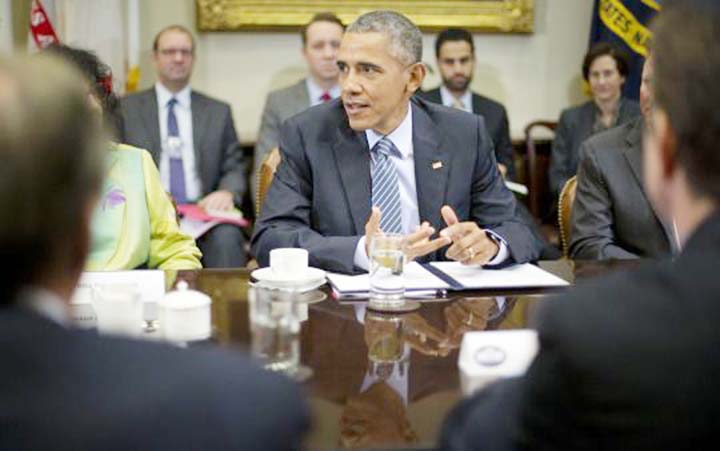
AFP, Washington :President Barack Obama heads to a terror-scarred Paris Sunday night to tackle one of the most important priorities of his second term – climate change.Obama has been laying the groundwork for years ahead of the United Nation’s two-week conference on countering climate change, where nearly 200 countries will be hammering out a pact to cut global emissions of heat-trapping gases. Using executive power, the president has moved the U.S. toward lowering carbon emissions, a key step in building credibility for his efforts to coax China, Brazil and other developing nations to do the same. The Paris conference may help cement his second-term legacy – unless it is overshadowed by terror concerns or sabotaged by Republican opposition to his plans.Obama’s environmental legacy at this point is mixed. Environmentalists were not enthusiastic about his first term, when health care reform took priority. An effort to pass a cap-and-trade bill for carbon emissions – the Holy Grail of climate change activism – fell apart in 2010. In 2011, Al Gore wrote in Rolling Stone that he was disappointed the president hadn’t brought “change” to the problem of global warming. Though Obama’s stimulus bill included $90 billion in green energy investments, environmentalists were discouraged by the lack of any concrete legislation lowering U.S. emissions.This all changed in the president’s second term, however, when he told top aides he planned to go big on climate. In June 2013, Obama laid out an ambitious plan to cut emissions from coal-burning power plants and other sources that could be implemented without legislation. “As a president, as a father and as an American, I’m here to say we need to act,” Obama announced in the sweltering heat of a Washington summer. In March, the president told the Huffington Post that getting climate change taken more seriously would be one of the ways he would measure his success as president.One of Obama’s biggest environmental successes has been in cutting emissions of greenhouse gases during his years in office. The country is now on track to cut its greenhouse gas pollution by 17 percent by 2020 compared with 2005 levels, the original goal set by the failed cap-and-trade legislation. This progress is driven in part by market forces Obama had nothing to do with – the recession and surge in availability of cheap natural gas – but also the growing popularity of green energy sources. In the past few years, the president has also used existing environmental legislation passed under Richard M. Nixon to force new coal plants to curb their emissions. He has also tightened fuel, vehicle and appliance efficiency standards, all without the help of Congress, which opposes his environmental agenda.But it’s unclear if the president will be remembered for his actions on the environment, especially given that executive action – an easier legacy to erase than legislation – can be reversed by the next president. “He’s coming back to an issue he really cares about,” says Julian Zelizer, a political history professor at Princeton University. “He’s not doing it through legislative action but through executive action, which is more precarious and I think in some ways has less political impact than a bill.”

